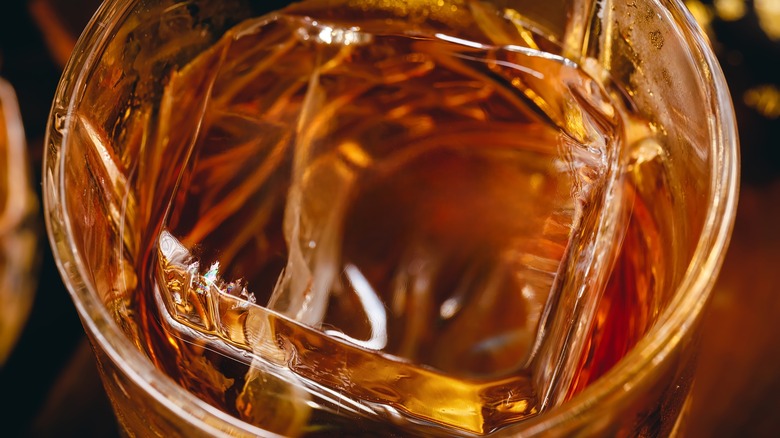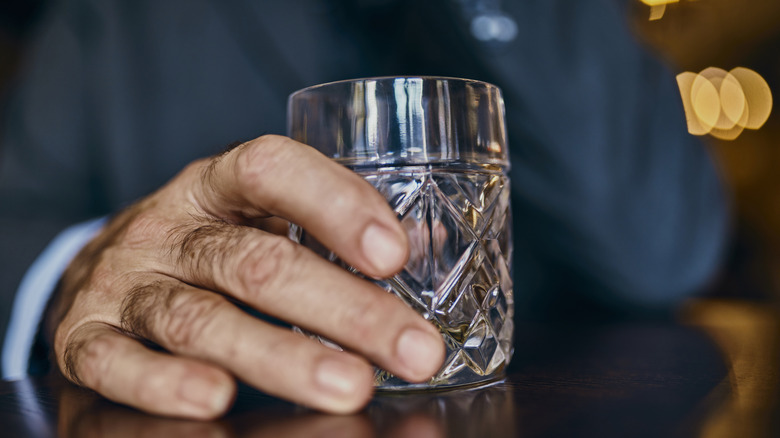What Is Rapidly Aged Bourbon, And Is It Worth Drinking?
Instead of waiting years for barrels of bourbon and rye to mature and develop flavor, some distillers have come up with creative ways to circumnavigate the traditional aging processes. Shortcuts to speed up the path to a tasty, complex dram aren't new, and they're applied to various spirits like rum, tequila, gin, and brandy, each method tailored to the spirit's unique characteristics and flavor profile.
From adding ingredients like burnt sugars, essential oils, and fruit juices to alcohol, distillers have long sought to mimic the flavors of matured whiskey — that is until regulations dictated the details of the bourbon-making process: bourbon whiskey must be made in America from at least 51% corn mash, distilled at a capped ABV of 79.5%, and aged in new charred oak barrels before bottled without any added coloring or flavor.
Typically, bourbon is placed into barrels as clear alcohol, and over time, contact with the barrels develops both color and flavor of the spirit. While over-aging can dilute the flavor and overpower subtle tasting notes, masters of the craft know just how long is required to unleash the ideal tasting notes that will have drinkers savoring every sip. Rapid aging refers to an approach that attempts to speed up this process, like adding wood chips to the barrels to increase contact with wood or partitioning out the liquid into smaller barrels to increase the surface area of liquor exposed to the barrels. Not every connoisseur is convinced of the efficiency or the result, however.
Decent whiskey without the wait
As distilleries recognized that aging products quickly meant the possibility of boosted revenue, artisan distilleries have played with methods that could maximize touch points between barrel and whiskey, like smaller barrels, barrels made from grooved staves, and wood chips added to the barrel. Higher temperatures have been used by distillers looking to speed up the aging process, and some distilleries have programmed sound waves to reverberate throughout their warehouses to create friction between alcohol and wood. Barrel racks and heated warehouses have been used since the 1870s to improve air circulation and accelerate maturation, but modern-day distilleries have also relied on machinery and technology to pump distillate in and out of barrels before aging whiskey in stainless steel tanks.
After the first sip, some taste testers have less-than-favorably described the results, asserting that there is, in fact, no replacement for time when it comes to the aging of alcohol. Rapid-aged bourbons have been likened to instant coffee powder instead of a freshly brewed shot of espresso, and arguments have commenced that these processes don't accelerate maturation but are simply a different way to finish booze. While many factors impact a bourbon bottle's flavor, it is ultimately up to the consumer to determine whether their dram of choice is worth the wait. With so many different kinds of bourbon to sample, there will be no shortage of labels to enjoy during such tasting experiments.

